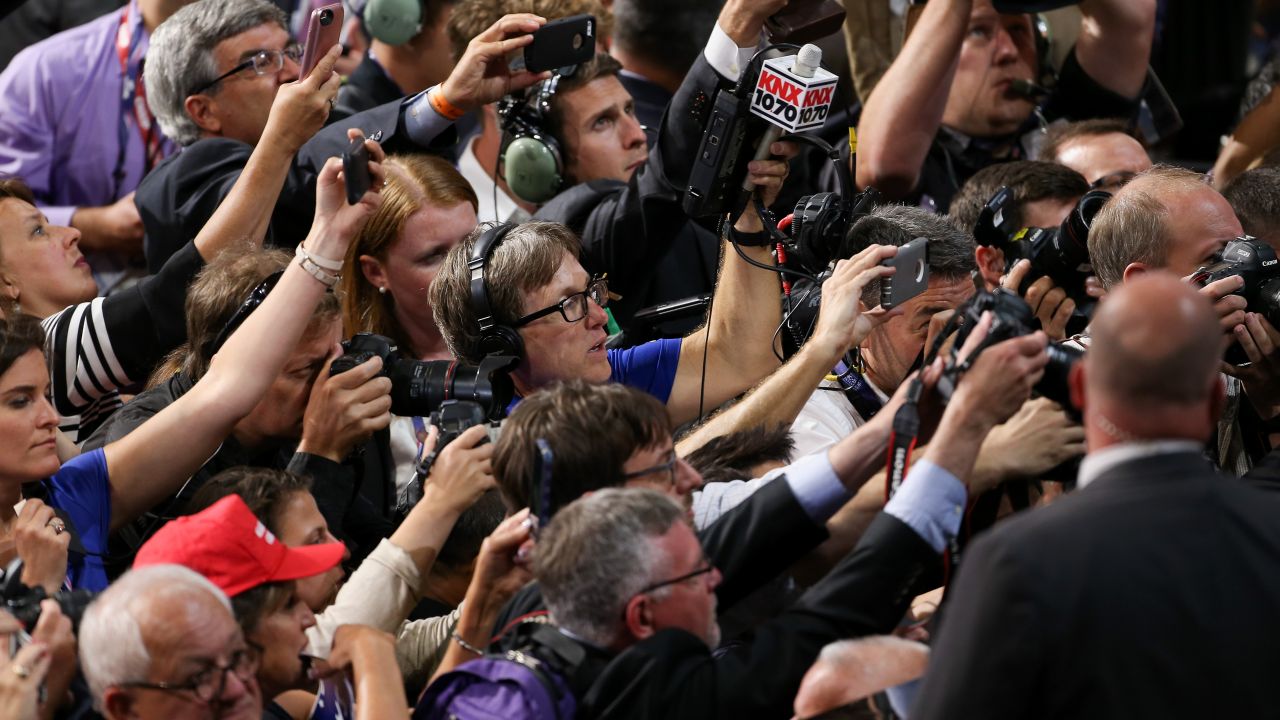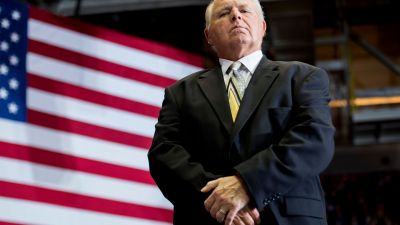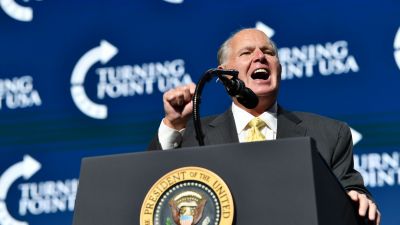
Journalists try to get images of Indoana Gov. Mike Pence on July 18, 2016, the first day of the Republican National Convention, in Cleveland. (Photo by Tasos Katopodis/WireImage)
More than 15,000 journalists descended on Cleveland to cover the Republican National Convention. But it was an unemployed TV reporter sitting in a Starbucks in Los Angeles, 2,345 miles away, who broke the biggest story of the week.
Laid-off TV journalist Jarrett Hill‘s scoop dominated two days of coverage so the facts are well known: At her much-anticipated first-night speech Monday, would-be first lady Melania Trump plagiarized some parts of a speech delivered by the current first lady, Michelle Obama, when her husband, Barack Obama, was first nominated in 2008 by the Democratic party. Initially, Republican candidate Donald Trump’s team went to war, flat out denying the plagiarism, and then admitted it.
There are political lessons to be learned here, most of them old (the cover up is 1,000 times worse). But there’s also a lesson for the media: What undoubtedly will be one of the best-remembered stories of the 2016 Republican convention wasn’t even unearthed by the throngs of reporters combing for news in a tightly controlled, scripted environment.
Media from all over the world, big and small, set up shop in Cleveland to cover the quadrennial convention. At a time when reports of a shrinking media that can’t sustain itself abound, along with stories of endless buyouts and layoffs in the news industry, The Washington Post sent 80 people; The Huffington Post sent 40 (although many traveled by bus); Buzzfeed had 19 there. Even scrappy Gawker sent a staff of four.
CNN sent 18 anchors and 25 reporters — and that doesn’t include the army of producers, make up artists, videographers, go-fers and digital aides-de-camp required to support the “talent.” The number is closer to 500, a CNN source told me. NBC and MSNBC sent more than 45 anchors, correspondents and embeds. ABC has about 200 people there.
You get the picture. Coverage of the RNC was excessive. Especially when you consider that there’s little opportunity to snag a story no one else has — unless you are a lone tweeter in LA with an excellent memory.
(The other irony: Amidst the unfolding news about Fox News icon Roger Ailes, who by week’s end stepped down over sexual harassment charges, scores of reporters found themselves trying to cover a real story happening in New York from press booths in Cleveland.)
Robert Bluey, editor of The Daily Signal, a multimedia news organization of the Heritage Foundation, summed up the ridiculousness of the Cleveland media landscape to The (Cleveland) Plain Dealer. “With so much media attention on the RNC, it’s a challenge to find a fresh angle for stories, said Bluey. ‘How can we produce unique content our audience can’t find elsewhere?'”
The answer is simple. They can’t. The 15,000-member media army roaming “The Q” (as the Quicken Loans Arena is known) for nuggets of news equates to six journalists for every one of the nearly 2,500 delegates.
In reality, the Republican convention (and the same will be true for the Democratic version) is just a big, fun blowout for journalists to get together, drink, party and gossip. It’s the famed, often-mocked White House Correspondents Association dinner on super steroids.
It is not serving the public to have thousands and thousands of skilled journalists milling around The Q interviewing each other. What stories are going uncovered? And parenthetically, would they be covered anyway in a media culture that celebrates celebrities, loves quick hits and can’t wait to move on to the next Big Event? Remember the shootings of and by police in Dallas, Baton Rouge and Falcon Heights, Minnesota?
Why do so many journalists and media organizations go? Why do news operations spend (conservatively) tens of thousands of dollars to “cover” what amounts to a four-day political commercial? What do they hope to gain at an event where the outcome is preordained?
— Jonah Goldberg, National Review
Ken Doctor, an expert on the news business who writes for Politico and at Newseconomics, believes the RNC coverage is justified.
“Of course, it can seem like overkill, but it is the story of the moment, and one with huge implications for American democracy,” said Doctor via email. “Most political conventions indeed fall into mere pageantry, but this one has actually offered news day after day. Anytime media coverage converges on simply reporting the same set of known facts — Olympics, coming up — that seems like a textbook example of the poor resource allocation. This convention, though, perhaps more than Hillary’s, is different.”
True, this convention has more potential than most for delivering the unexpected, given the freewheeling and at times reckless nature of Republican nominee Donald J. Trump. Yet is one more Trump eruption, one more angst-ridden, nose-holding Republican really the kind of news that merits wall-to-wall, flood-the-zone coverage the conventions get?
Consider this different assessment: “You know, conventions — people call them political conventions,” Jonah Goldberg of National Review told NPR. “But in reality, to a large extent, they’re media conventions… It’s a chance for everybody to get together and catch up and have drinks and commiserate and gossip.”
So our nation’s newshound go — and will continue to go in spite of the wretched excess — for the prestige, the vanity of being part of the pack, and the pure fun of hanging out at Politico’s Oxygen Bar or the CNN Grill getting free food and drinks. They go to be seen and see. They go to schmooze, and network with the thousands of political operatives that surpass the number of delegates. “It’s truly surreal,” one journo friend told me.
Maybe by some measures (especially the click-driven metrics that now animate cash-starved newsrooms), this convention may have offered “news,” but for a country deprived of the kind of in-depth, nuanced information that voters need to keep this democracy afloat, the result of packing 15,000 journalists into a few square miles has been, as they might say in one of Cleveland’s bars, more foam than beer.




